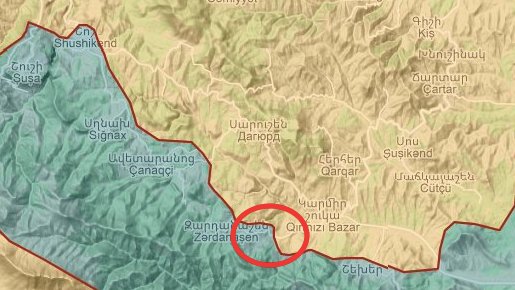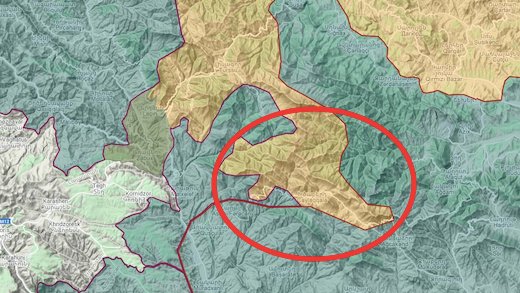2/ Both locations of reported incidents are of strategic importance.
The village of Taghavard saw toughest fighting during the latest weeks of war. It is located close to the road that connects Azerbaijan-controlled areas with Shushi.
3/ Reportedly Baku is now constructing a new road to connect with Shushi. But it will take time, no one knows if it is gonna be good enough during the year, and it will still have to cross the road for a joint Arm-Az use from Lachin to Stepanakert.
4/ 2nd, and reportedly more serious incident, took place at this enclave. It was almost a miracle that Arm sustained control over this area, mainly due to the stubbornness of the local volunteers.
A larger map by
@Krummapper here:
https://t.co/8KrUmk8QK2
5/ No precise information whether Az troops took over one, two or all the villages in this enclave. Russ peacekeepers reportedly visited the area, which is not indicated as part of their responsibility on official maps.
6/ Any lessons learnt? One may not like them, but still:
a. Unfortunately, a good chance this is a new reality of this conflict zone. New line of contact is not a result of agreed compromise. Therefore, a good chance for new attempts to change it in the future.
7/ b. In contrast to past decades, a new line of contact is located next or in the midst of civilian settlements.
Previously Arm households were separated from frontline by kms of “buffer zone”=adjacent territories.
We will hear about incidents involving civilians more often.
8/ c. New line divides some households in two. Some lose farmlands which are next door.
A good chance this will be a constant point of tensions with incidents, detentions, killings, etc.
All will be in media boosting pain and possibly even reinforcing calls for a new war.
9/ d. Check what happens with borderisation in #SouthOssetia and how many problems it causes for both local residents and the Georgian politics 12 years after the 2008 #Russia #Georgia war:
https://t.co/NoFOcaKMrk
10/ Any way to prevent these problems? Not entirely, but few things can be done:
a. Yesterday for the first time the Russian peacekeepers reported use of “an operational line” between two sides to calm incident. No clarity yet how it works...
11/ ... But really promising if this is a “hot line” that the sides can use to warn about their concerns or to exchange information on detentions and other incidents.
This will not eliminate all the problems, but potentially can bring some more certainty on the ground.
12/ b. To avoid establishing a new trench-like frontline, maybe possible to agree on some zones where certain types of weaponry is prohibited with the Russ peacekeepers responsible for observance of the deal. This could minimise the feeling of a life at a gun point for civilians.
13/ c. If no new arrangements, I am afraid the Russ peacekeepers have a mission impossible. Their number should be only around 2000. They are there to prevent resumption of a new war. Difficult to see them with distinct tasks of controlling incidents and protecting civilians.
14/ d. Best could be find a way to establish a regular cooperation between representatives of the sides present on the ground. To discuss incidents, make attempts to prevent them, look into everyday problems with water supply, roads, crossings, farmlands, etc. ...
15/ ... Maybe meeting once a month with the Russ mediation. This is a practice in many other conflict zones.
Unfortunately, #Karabakh conflict never had such experience. Maybe time to start? Otherwise, difficult to see how to prevent constant tensions on the ground. END



